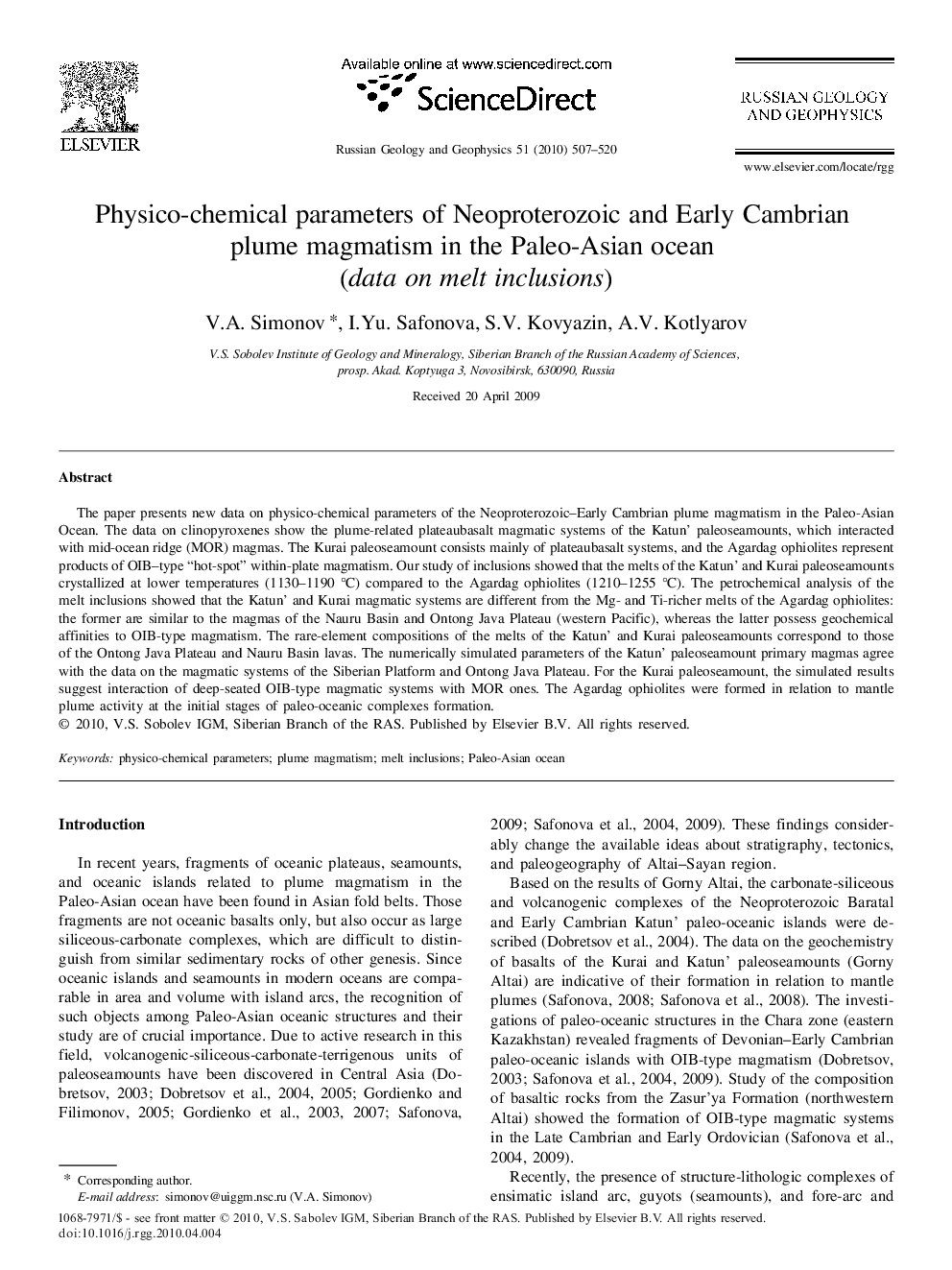| Article ID | Journal | Published Year | Pages | File Type |
|---|---|---|---|---|
| 4737935 | Russian Geology and Geophysics | 2010 | 14 Pages |
The paper presents new data on physico-chemical parameters of the Neoproterozoic–Early Cambrian plume magmatism in the Paleo-Asian Ocean. The data on clinopyroxenes show the plume-related plateaubasalt magmatic systems of the Katun’ paleoseamounts, which interacted with mid-ocean ridge (MOR) magmas. The Kurai paleoseamount consists mainly of plateaubasalt systems, and the Agardag ophiolites represent products of OIB–type “hot-spot” within-plate magmatism. Our study of inclusions showed that the melts of the Katun’ and Kurai paleoseamounts crystallized at lower temperatures (1130–1190 °C) compared to the Agardag ophiolites (1210–1255 °C). The petrochemical analysis of the melt inclusions showed that the Katun’ and Kurai magmatic systems are different from the Mg- and Ti-richer melts of the Agardag ophiolites: the former are similar to the magmas of the Nauru Basin and Ontong Java Plateau (western Pacific), whereas the latter possess geochemical affinities to OIB-type magmatism. The rare-element compositions of the melts of the Katun’ and Kurai paleoseamounts correspond to those of the Ontong Java Plateau and Nauru Basin lavas. The numerically simulated parameters of the Katun’ paleoseamount primary magmas agree with the data on the magmatic systems of the Siberian Platform and Ontong Java Plateau. For the Kurai paleoseamount, the simulated results suggest interaction of deep-seated OIB-type magmatic systems with MOR ones. The Agardag ophiolites were formed in relation to mantle plume activity at the initial stages of paleo-oceanic complexes formation.
